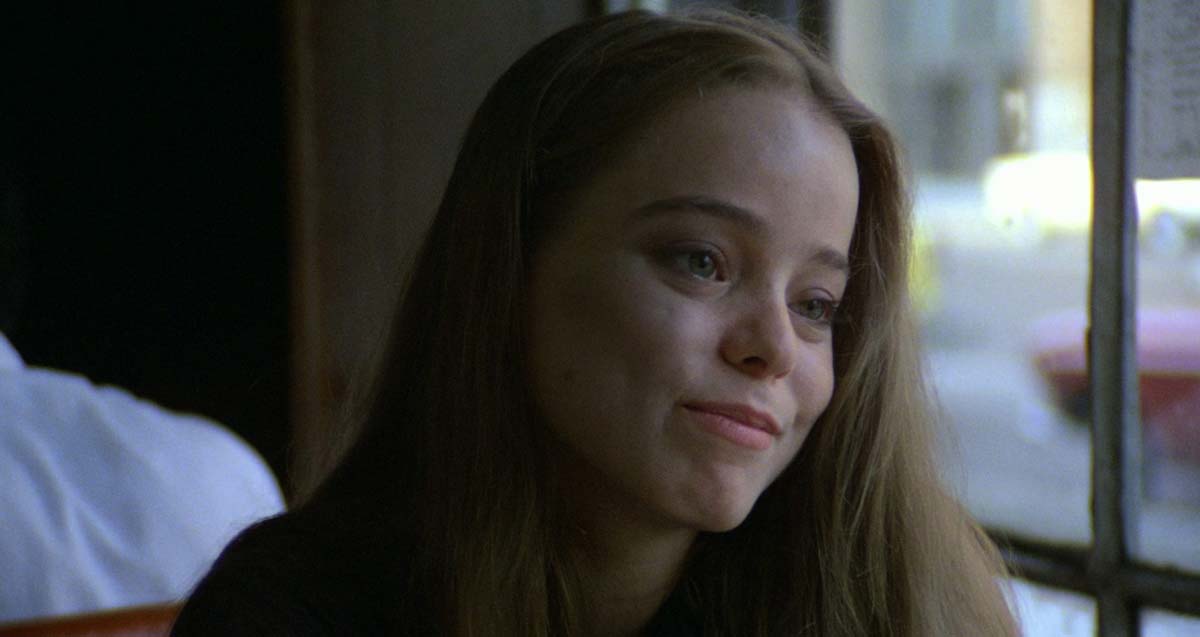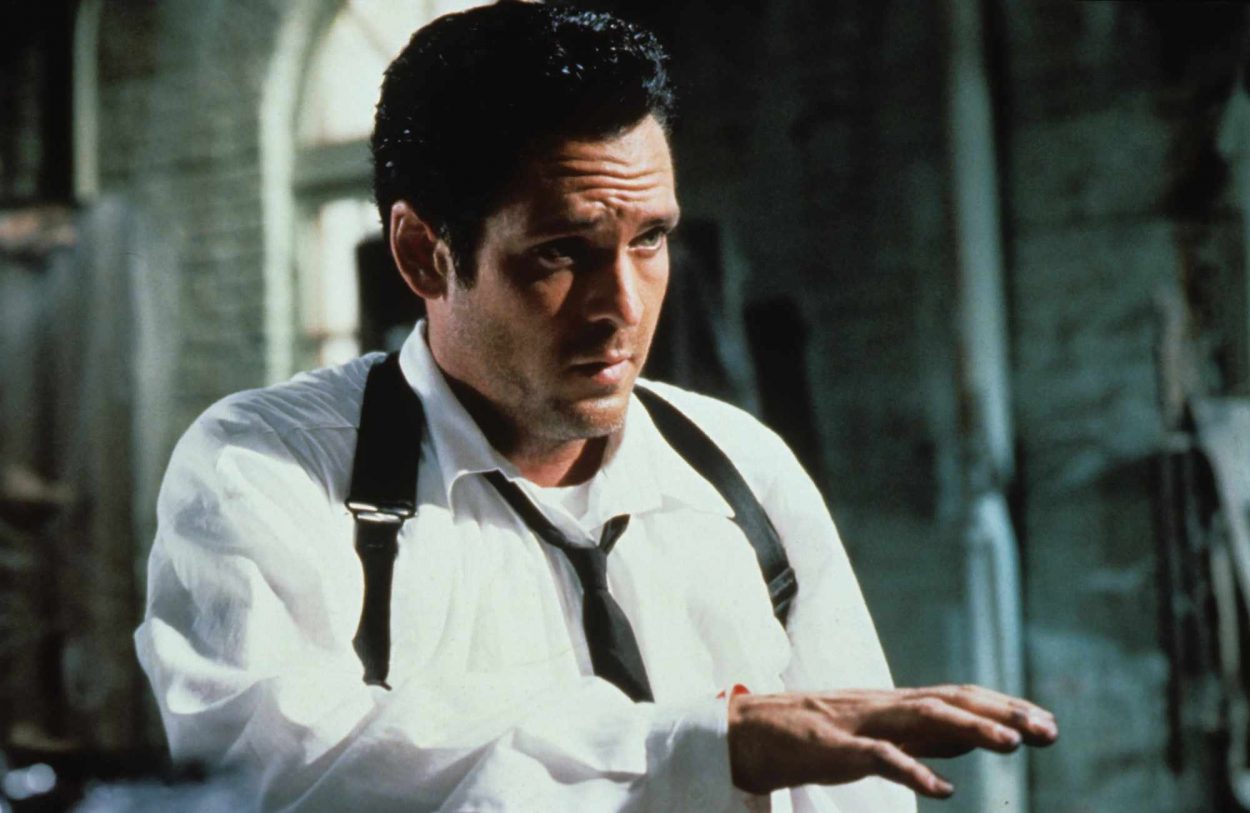Somewhere in America, a polite wife and mother goes about her business with neighbors and business associates, with perhaps only her immediate family and a few close friends aware that decades ago, under the name Paula Sheppard, she gave unforgettable performances in two of the most striking and still vigorously discussed films of their respective decades. In cult-movie-loving hearts across the world, meanwhile, the fans of those films still wonder what happened to that defiant performer. Maybe there will never be true rapprochement between these two parties, but at the very least, they can each find pleasure in those moments. And more importantly, movie audiences continue to discover her.
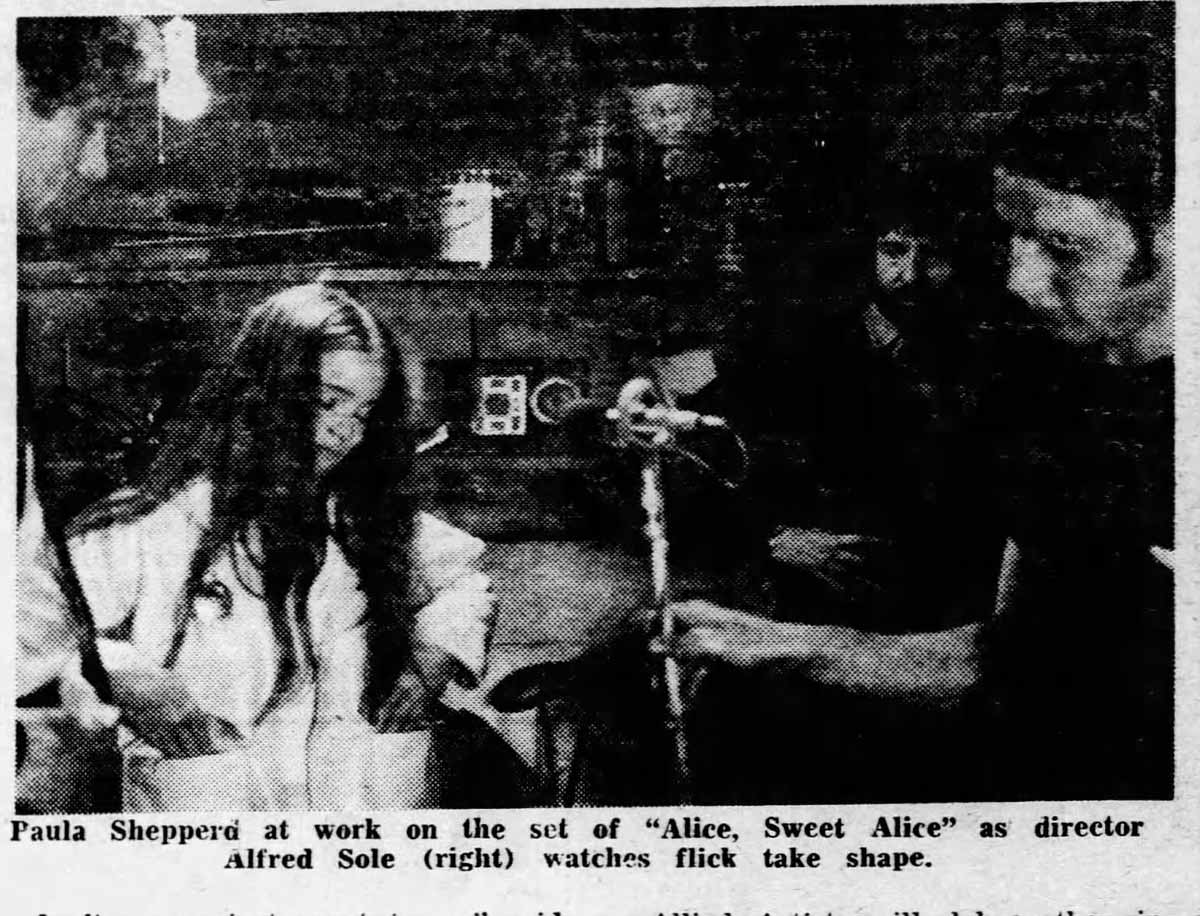
“This really strange guy came up to me at lunchtime and said he wanted to put me into movies. I didn’t know what to do. Several other guys had approached me with the same line, and they were obviously creeps. Alfred seemed kind and honest, though, and I talked to him about it.” – Paula Sheppard, 1977
As detailed by Bruce Chadwick in a two-part article for the New York Daily News in November 3rd & 4th, 1977, Paula Sheppard was an unassuming New Jersey high school girl studying dance when she was first scouted by a local filmmaker in 1975. The director was a former architect named Alfred Sole, who had achieved statewide notoriety for previously making a satirical adult film called Deep Sleep, which led to him, his producer, and two cast members being indicted by an ambitious prosecutor under a 1796 anti-fornication law, resulting in $100,000 in legal fees. After a two-year ban from filmmaking, Sole was determined to shoot a legitimate production, and inspired by personal experience with a fanatically Catholic neighbor, along with being excommunicated from his neighborhood church as a result of being perceived as a pornographer, conceived a thriller called Communion, about murders within a 1961 Catholic parish in Paterson, the time and place of his formative years. Sole cast the neophyte Sheppard to play Alice Spages, a bad-tempered and grimly whimsical 12-year-old suspected of murdering her 9-year-old sister Karen just before her First Communion ceremony. Though she was already 18, she was barely 4’9” in church shoes, making her convincingly able to embody a willful child.
“I never acted before in my life, and to this day I still don’t know why Alfred wanted me in this picture. It was tough to act. I never went to acting school or even paid much attention to actresses in films.” – Sheppard, 1977
While primarily a “did she or didn’t she” mystery about potential sororicide, Alice’s travails are a springboard for one of the best depictions of the ravages of pre-Vatican II East Coast Catholic guilt not directed by Martin Scorsese, and Sheppard is up to the challenge. Yes, she is actively hurtful to her favored little sister, and prone to mean pranks against adults. But it’s also clear she’s been treated as a pariah by the neighborhood since birth, as it is hinted that her parents were not married when she was conceived, a stain that may have cost her a First Communion of her own, since she is consistently desperate to receive the sacrament and is always denied, a metaphor for yearning to have the acceptance Karen has enjoyed. The parents’ subsequent divorce and furtive attempts at cordial co-parenting, in an all-or-nothing era when the Baltimore Catechism essentially proclaims that no such status will be recognized, has made her mother a scorned woman as well, including by her own adult sister. Moreover, Alice is surrounded by hypocritical grown-ups, such as her hostile aunt, a predatory landlord, and the apparently-lifelong spinster who serves as church housekeeper. And there’s also the matter that she has already begun to manifest a biological leap to womanhood. Alice is at a crossroads without any helpful guidance, and Sheppard captures the wild gamut of emotions therein.
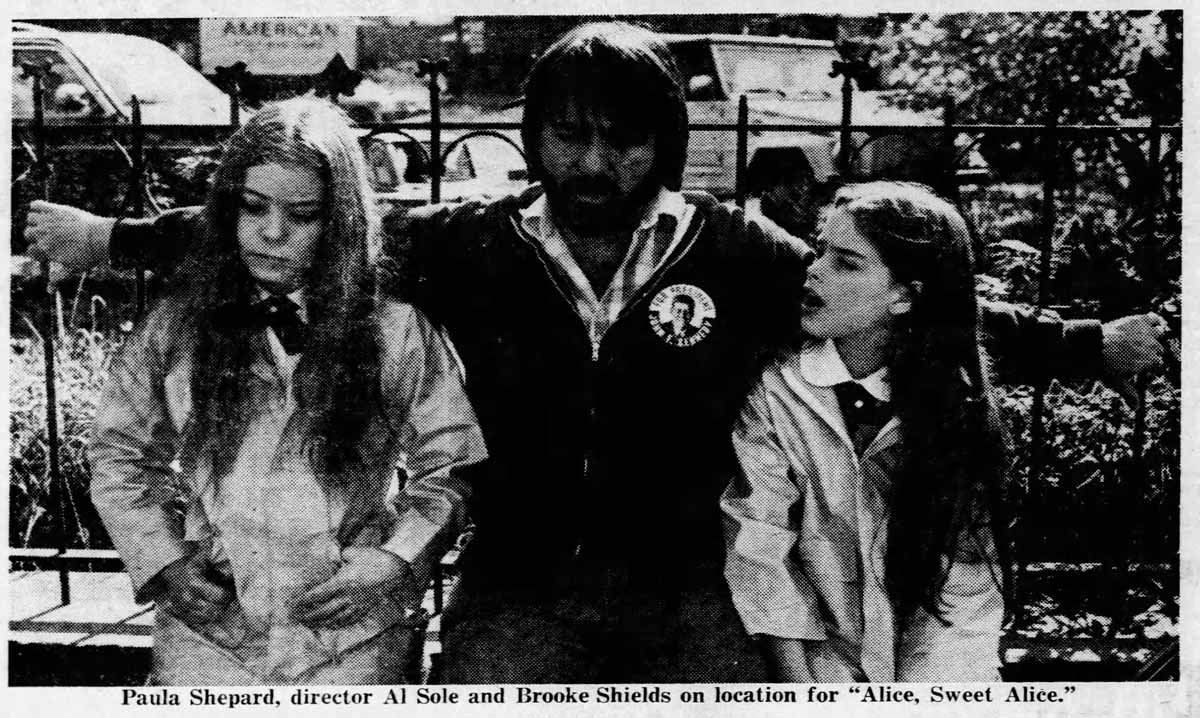
“I am a soft-spoken, mild-mannered girl. I never had a younger sister to hate like I do in the film. It was difficult to be so vicious.” – Sheppard, 1977
If it wasn’t readily obvious, despite the presence of respected actors as Linda Miller, daughter of Jackie Gleason and mother to Jason Patric, and Lillian Roth, the stage actress whose autobiography I’ll Cry Tomorrow spawned a film adaptation, plus the rising popularity of child model Brooke Shields playing her ill-fated sister, that Sheppard was the breakout star of Sole’s film, it was cemented when Allied Artists acquired the rights to Communion and retitled it Alice, Sweet Alice for its general release. The aforementioned Bruce Chadwick stories observed, “Maybe it was her inexperience that gave her the needed look of vulnerability and innocence,” and proclaimed her “the acting find of the year.” UK publication The Daily Telegraph lauded, “a memorable performance from Paula Sheppard as the girl you’d least like to meet on a dark night.” Even Linda Gross of the Los Angeles Times, who had panned the film as “foul” and “an obscenity,” declared, “Shields shows a mixture of vulnerability and smugness, and Sheppard is excellent as her very disturbed older sister.”
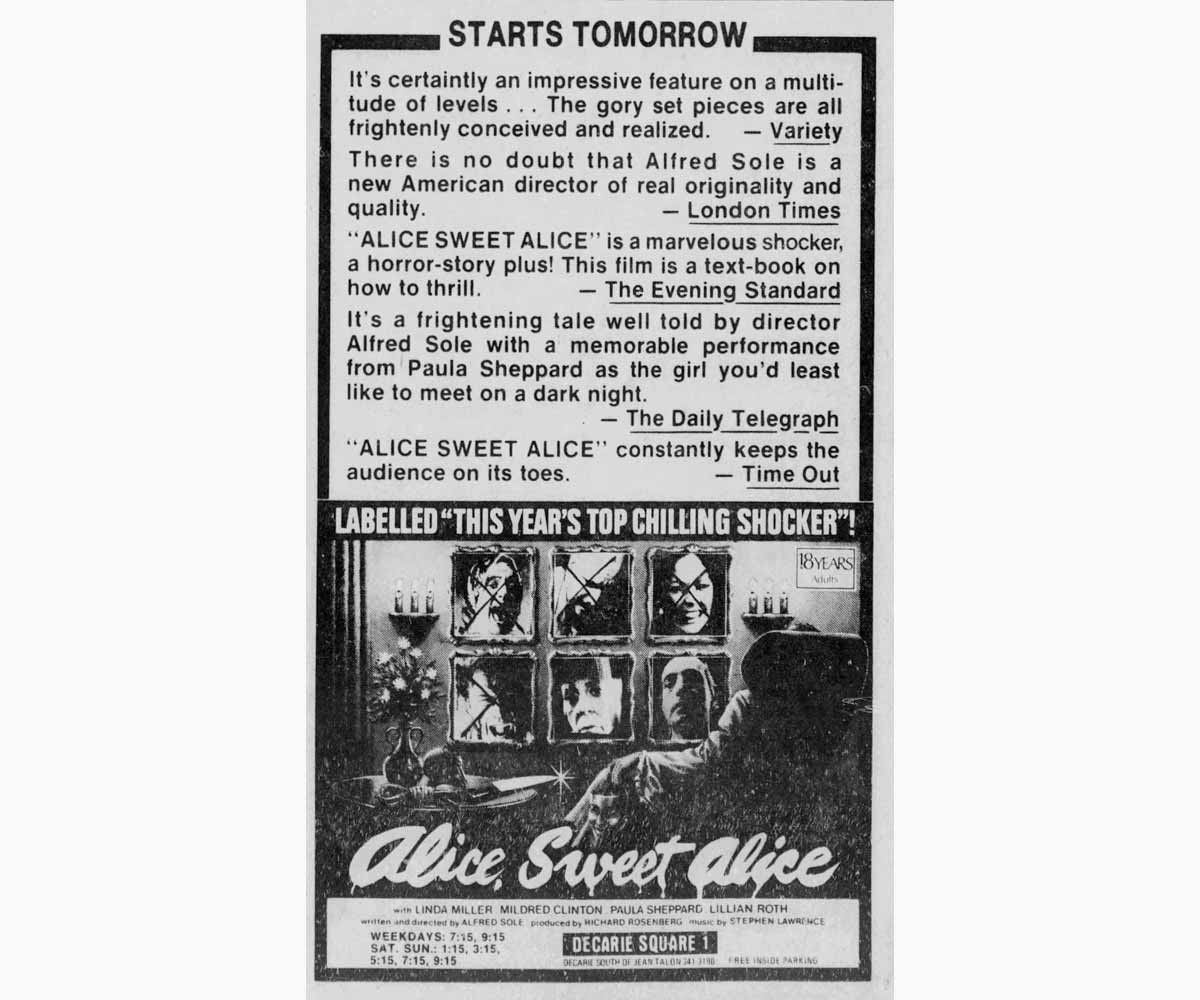
Sheppard initially seemed content to be one and done after her debut. The last lines of Chadwick’s profile declared she had left the East Coast for college further west, and had no intention of seeking another acting role. Soon after, Allied Artists went out of business, Alice Sweet Alice got picked up by another distributor and renamed again to Holy Terror with an ad campaign focused entirely on Brooke Shields, so it appeared the film world was leaving her behind as well. But one unlikely individual with a colorful past of his own did not forget about about the young woman and her commanding presence.
Slava Tsukerman was a Russian-born filmmaker whose initial forays into production in the Soviet Union were constantly plagued by anti-Semitism and government interference. Emigrating with his wife Nina Kerova to Israel in 1973, he made several TV documentaries but still yearned for larger storytelling opportunities and more creative stimulation, so three years later, the couple moved to New York City. Over the next few years, he had made shorts and written several scripts which had failed to attract financing, and while auditing an acting class for one of those stalled projects, met androgynous performer Anne Carlisle, a former Connecticut preppie, who was deeply immersed in the underground music and art scene associated with the punk and “No Wave” movements. Fascinated by the look and behavior of several of her associates, Tsukerman & Kerova collaborated with Carlisle to write Liquid Sky, a wild fantasy that could be done on a low budget, would make use of their existing connections in the arts world, and touched upon some of the darker, dangerous elements Carlisle had dealt with previously. And in the quest to fill the role of an abusive girlfriend, Tsukerman reached into the past…
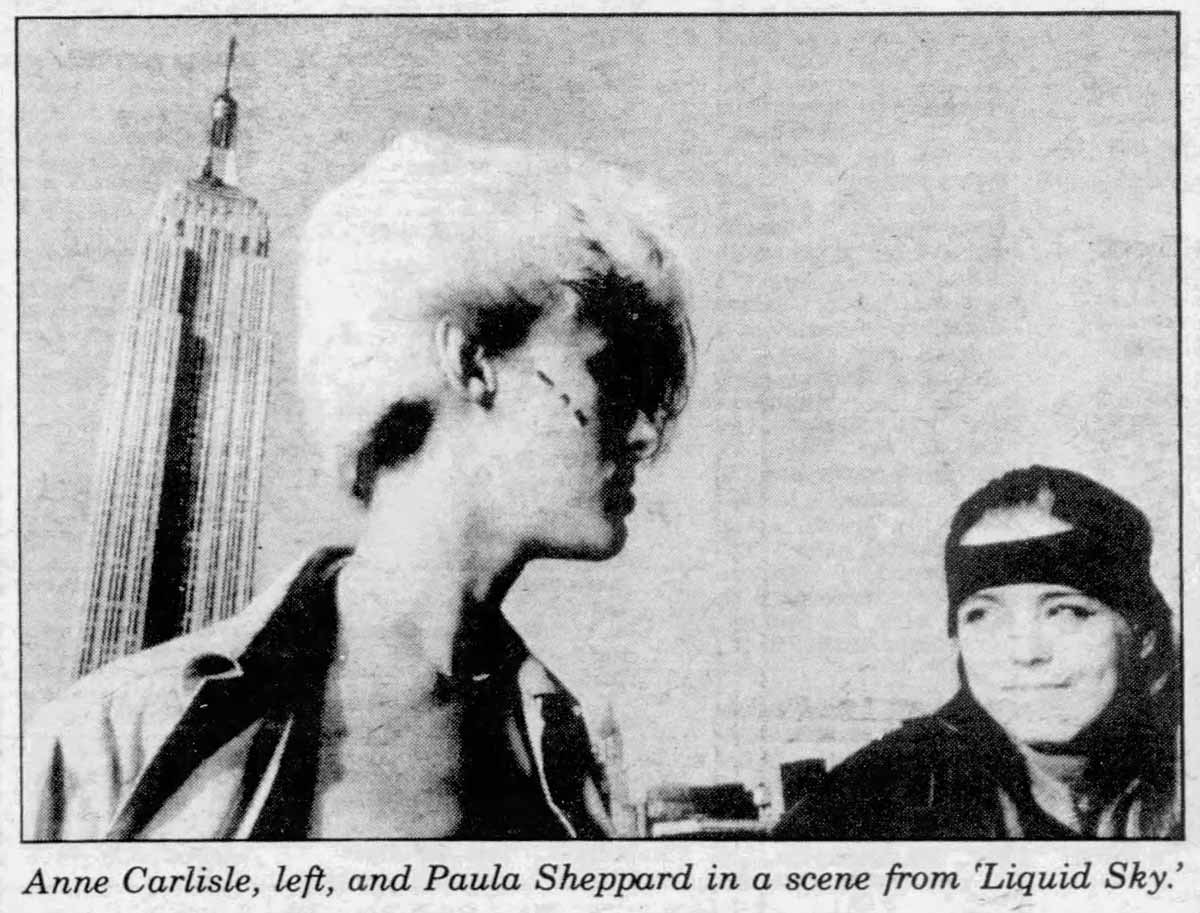
“Paula Sheppard was chosen by us because of Alice, Sweet Alice…before this [project] I was developing another film, a science fiction story called Sweet Sixteen, and we were casting, our leading character was a girl who stays 16 all her life because her mad scientist father made her a mechanical body…she’s already 50 but she’s [physically] 16. And it was very difficult to find an actress who can play a role like that. And then we discovered Alice, Sweet Alice, and immediately fell in love with Paula. But the film was never made because family investors decided not to invest in it…We decided we need to cast this [antagonist] character, and it was very difficult, we couldn’t find a good actress…everybody was showing typical punks, but it was just image, not real character. And then I said I want Paula, because only Paula can play this character like that. Paula was completely different, in her life she was a completely different character; she was more like a hippie, she loved everybody, you know, not a mean person.” – Slava Tsukerman on Greg Gilbert’s Python’s Paradise podcast, October 2017
Liquid Sky’s peculiar story is ostensibly a showcase for its star Anne Carlisle, who plays both Margaret, a co-dependent model who socializes with a collective of surly artists, and Jimmy, a vain and misogynist male model who’s part of her clique. Miniscule aliens infiltrate Margaret’s apartment, initially feeding off her heroin addiction, but the invaders achieve greater highs from leeching onto and then killing off everyone she has sex with, including Jimmy. But while Carlisle is certainly compelling, Sheppard frequently commandeers focus as Adrian, Margaret’s primary friend with benefits, a performance artist and drug dealer, both tender, regularly yearning to take her overseas, and toxic, undermining her self-esteem. Adrian’s rendition of “Me and My Rhythm Box” simultaneously ribs the aura of Grace Jones and predicts the rise of electroclash, and has been cited as a high point not just by fans of the movie, but by electronica musicians as well. Adrian is living a lifestyle that is unsustainable, and rather intolerable, and yet the viewer still wants to see her somehow turn things around. Film historian Heather Drain reflected for Diabolique magazine in 2017, “[Sheppard] is mesmerizing as the fucked-in-the-head-and-heart Adrian. Like any innate abuser, Adrian’s alternately charismatic and sweet but can slither into vicious and controlling with the toss of the dice, both of which Sheppard pulls off cleanly.”
“Paula, who played [Adrian], is nothing like that. Slava and I coached her to teach her the character, the mentality of the character. There was a person we had in mind to play that role but when we had her read the role she said, ‘Oh that person is so evil, I could never play this character!’ So really Paula Sheppard was the best actress, she’s professional, she made the character and did the role, but is nothing like her.” – Anne Carlisle interviewed by Zora Burden
Of the critics that championed this divisive film on its initial release, many recognized her as its secret weapon. Steve Carr, writing for Chapel Hill’s Daily Tar Heel, proclaimed, “Paula E. Sheppard is moving…She keeps the sentimentality to a minimum, bringing out both the cruel and childlike qualities of her character.” Marshall Fine’s review for Gannett News Service stated, “Paula Sheppard, as Margaret’s nasty, aggressive lover, adds another dimension to the film, one of street-smart self-involvement.” And Stephen Hunter of The Baltimore Sun flat-out asserted, “[The] star that emerges from Liquid Sky may be Paula E. Sheppard as Adrian. Small and cute – she looks a little like Pat Benatar – and wired for action, Sheppard’s Adrian is electric.”
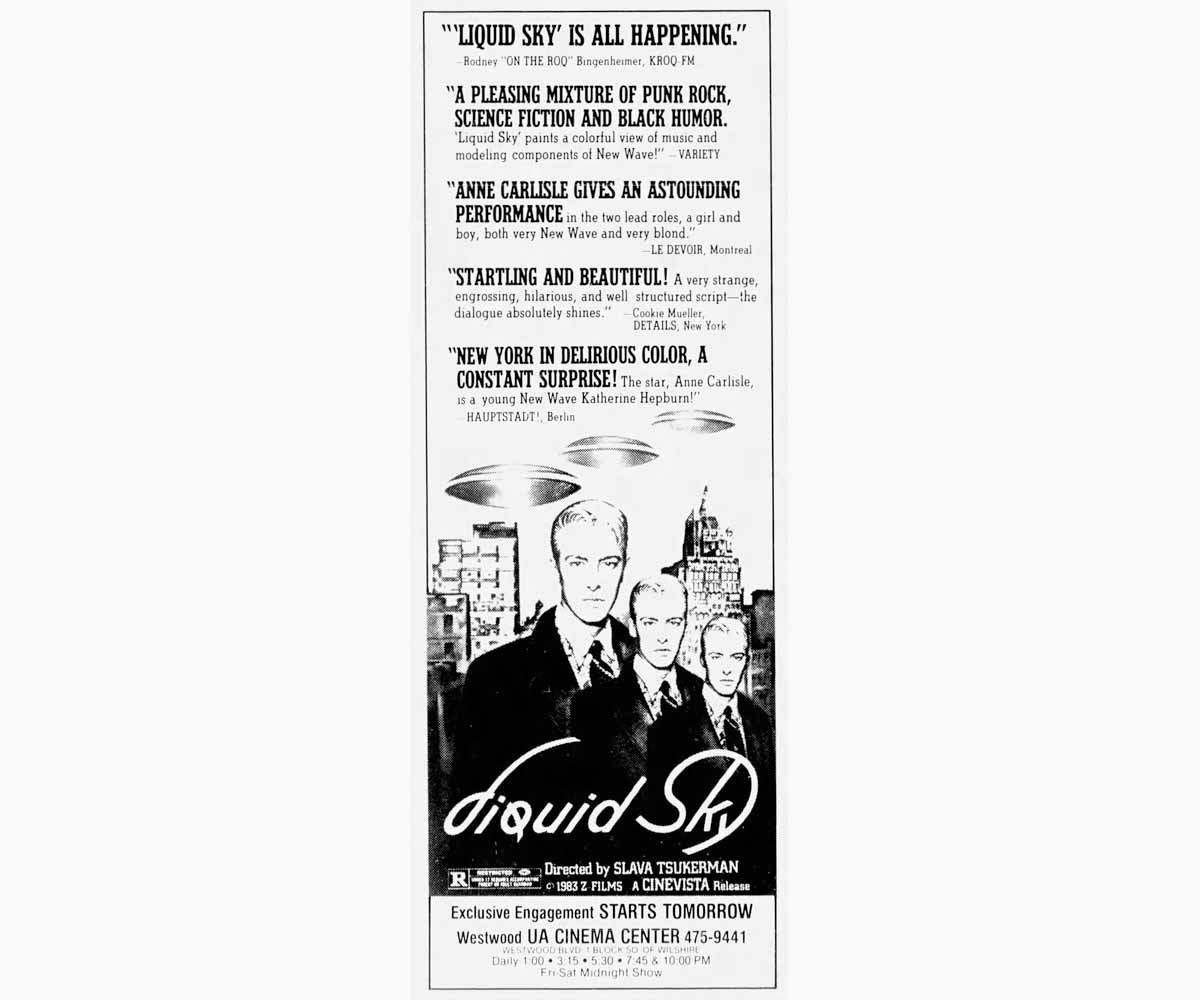
“I was showing the film in Hollywood. I remember every producer who’d seen the film, first of all, was falling in love with Paula and wanted her as an actress. And she never did it. She’s very emotional. Actually, [she was one of] four actresses, members in SAG, the Screen Actors Guild, and we still used them though the film was non-union; they agreed to do it because they had no other work. Then the film premiered in Montreal, and a review in Variety appeared. The Screen Actors Guild wrote to all four of these actors, a letter demanding why they were doing this terrible action, playing in a non-union film. Our production company decided we were ready to pay for them if they were punished, and we paid for everybody but Paula, because she got mad and said they never helped me to get another role, they never did anything for me, why should I pay them? She just [raised a stink], and then probably that’s why she didn’t want to play in other films after that.” – Tsukerman to Gilbert, 2017
Paula Sheppard’s path gets very muddy from here, sourced almost entirely from hearsay and random comments on message boards mostly purged from the web. Photographs demonstrate she did act in one more film project shortly after making Liquid Sky, a low-budget adaptation of the Scottish folktale Tam Lin (a previous 1970 film version was directed by Roddy McDowell), which was never released to the public. One rumor claimed she had been under consideration for a role in Michael Chapman’s 1986 adaptation of the best-seller Clan of the Cave Bear, but was not chosen. A family member verified she moved to the American northwest, married and had children, and was hereby content to stay as she was.
On the one hand, for everyone who has been impressed by her two knockout screen appearances, it can be frustrating that there could not be more opportunities for a gifted natural as herself, and that fan appreciation cannot be directly conveyed to her, or known to be received, or even wanted. But on the other hand, there is a fair comfort in knowing that a woman who is remembered as portraying, respectively, a disrespected child prone to lashing out and an addictive personality who praises yet fears being alone, has found serenity among a trusted body of loving souls, far away from hostile parties.
